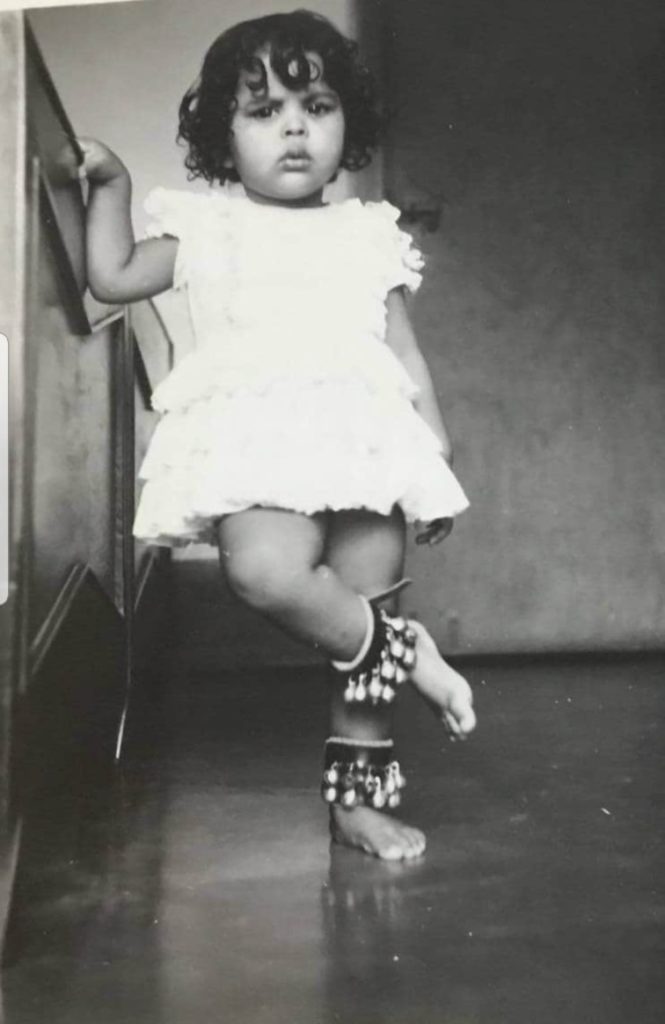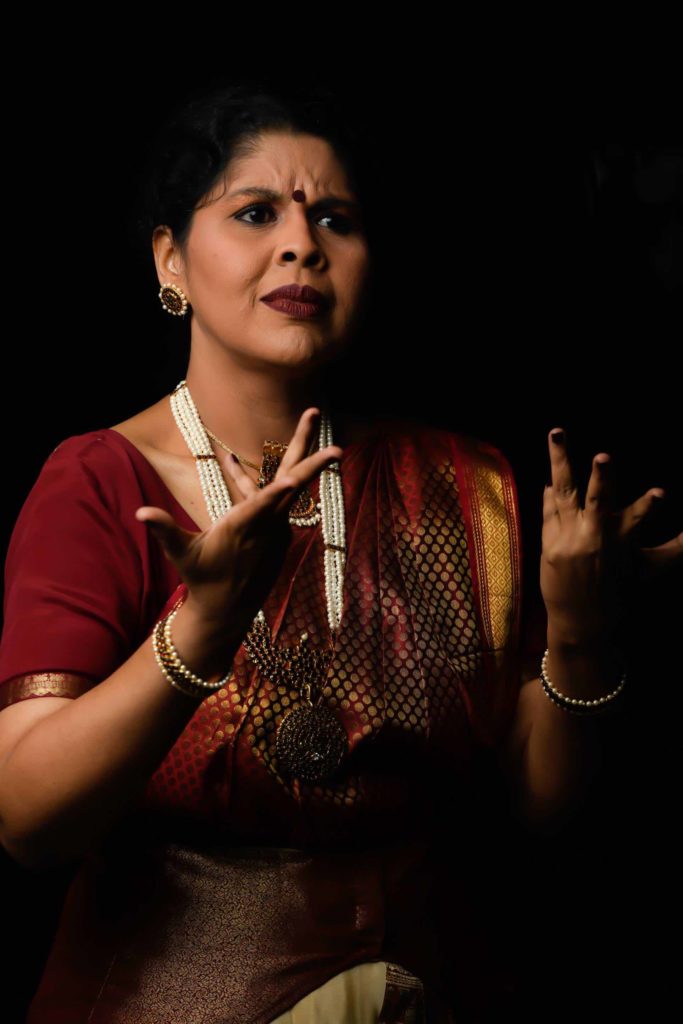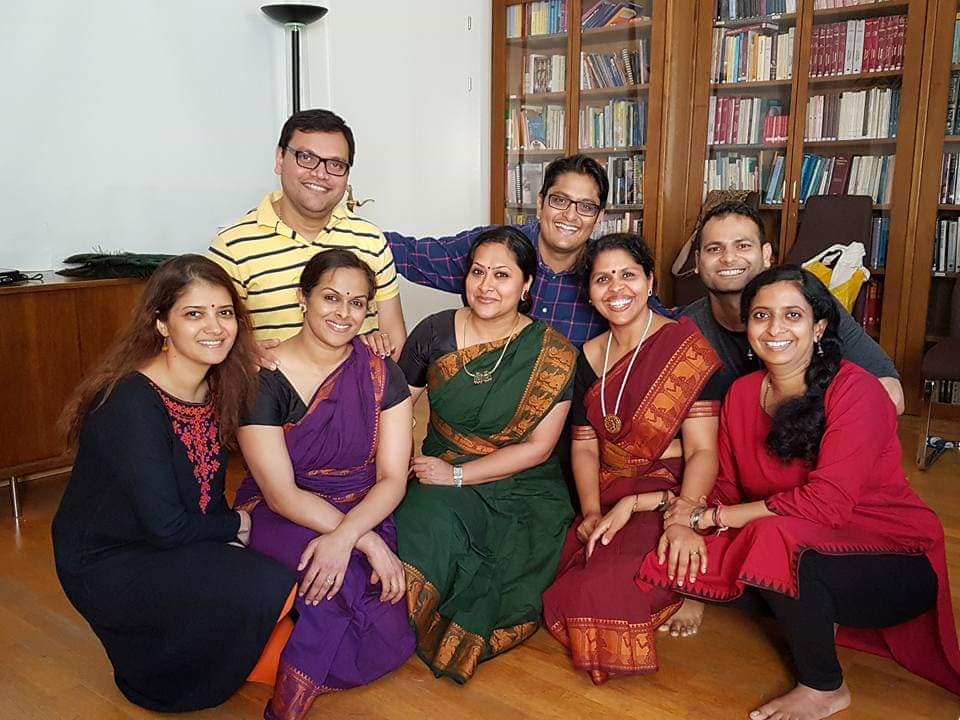

My initiation into the world of performing arts has been through dance. I started my journey at a local dance school as a toddler. At the age of four, when I was put up on stage with a bunch of other children at Children’s Little Theatre in Kolkata, I was looking for my mother in the audience, much to their hilarity. Later I learnt that when on stage, one should consider the stage to be one’s world first and then the audience.
I owe my passion and love for dance entirely to my Guru Shrimati Amala Shankar, wife of dance maestro Shri Uday Shankar. It was at the age of eight that I was admitted to her dance school, Uday Shankar India Cultural Centre. We were given extensive training in Kathak, Kathakali, Odissi, and Uday Shankar’s creative style of dance. Among the classical dance forms, Odissi stayed the closest to my heart.This, I accredit to my Guru Shri Murulidhar Majhi, who would make us repeat the Chowkas, Bhangis, Tribhangis, and the Mudras at length and over and over. Although at times, it was really painful and boring, I remember Guruji saying that for a dancer to thrive, it is imperative to master the basics first. Also, being pertinacious is a trait a dancer should own.
We were made to listen to live music with our eyes closed. Smt. Amala Shankar, whom we lovingly called Aunty, then asked us to feel the music in our hearts and emote it through our body. It was a lyrical expression of the heart through the universal language of the body. Amala Aunty would choose the person with the best dance movements to perform in front of the entire class. I was fortunate enough to receive this honour, several times. To my young mind, this engendered immense confidence and faith. Till date, I apply this particular technique, while choreographing a dance.

During our endless hours of practice sessions, Aunty made us learn the importance of coordinating our body movements in a group dance, of always being in sync with one another, so that each and every performance looked like a sheer work of art on stage. She was a perfectionist and instilled that value in us. Her teachings will remain with me forever. The ideals, morals, and discipline of Uday Shankar India Cultural Center have shaped me to become the dancer that I am today.
I had the opportunity to perform as a part of her troupe in several dance recitals, locally and nationally, in India. The joy and excitement of performing at Doordarshan, was indescribable. It was my first experience of working in a studio, in front of live cameras. I still remember that I couldn’t sleep a few nights prior to the performance. Another memorable experience was performing at Kamani Auditorium, one of the most prestigious theatre halls of Delhi.It was my first performance at the national level. At the age of 12, it was equally fascinating and nerve-wracking. Another awe factor was to meet the renowned mother-daughter duo Mrinalini Sarabhai and Mallika Sarabhai, who performed the same evening, and especially being able to watch them from the wings, was a delightful treat.
Amongst all the dance dramas that we performed, my all time favourite was Sita’s Swayamvara. In this drama, I saw my growth as a dancer. At the age of eight, I started with the role of the King’s attendant, and then with increasing age, proceeded to play the roles of Rakshasi (She-demon), Mendicant, Sita’s Sakhi (friend), and finally got promoted to play the role of Sita. This was so much on the lines of working with a professional dance company in Europe, where dancers work their way up the ladder to play the principal dancer of a production.

After moving to Switzerland by a strange happenstance, I got introduced to the renowned Odissi dancer Guru Padmashri Dr. Minati Mishra. Much to my delight, I had the great fortune of spending some time and also training briefly under her. By this time, my Odissi skills had become quite rusty due to years of non-practice. For a dancer of her stature, the patience and perseverence, with which she taught me, were astounding. My love for classical dance took me to the world of Indian dance theatre, which focuses on theatre using classical dance forms and expressions. It has given me an insight into the world of Bharatanatyam and into several techniques of theatre. Besides, I truly believe that it has honed my acting skills as well.
An interest in experimenting with different kinds of dances belonging to other cultures brought me in contact with the African dance form Kakilambe – a ritual dance. Dancing to African rhythms was a unique experience. My extensive training in the creative dance style of Uday Shankar, helped me immensely in learning Kakilambe, which utilises the concept of total body articulation while dancing to live music. Nonetheless, being a classical dancer, it took a lot of effort to master a dance style that goes beyond structural movements. Another interesting fact is that in this form of dance, the spectators are not mere onlookers but are also allowed to participate. I had this experience while performing at the open-air Afro-Pfingsten Festival, in Winterthur, in 2018. It reminded me of my first dance recital, where I was looking for my mother in the audience. This time, I looked for my children, but to my relief, the audience wasn’t amused.

When my parents admitted me to the local dance school, little did they know that they were giving me the best gift of my life – ‘dance’. Portraying different characters in dance dramas or in theatre has helped me gain maturity, made me see things in a different light, and, on some occasions, it has even made me question my attitude towards certain things. Dance has surely kindled creativity, empathy, camaraderie, joy, and passion in me. At all points of my life, in my highs and lows, dance has and will remain my sole companion.
While Amala Aunty inspired me to be imaginative and to articulate my ideas and thoughts through dance, Minati Aunty made me realise that for an artiste age is never a hindrance. From both of them, I learnt that practice, hard work, dedication, and love for what you do carries you through – be it an art form or anything else that you do in life.
–Suparna Acharya
Three Stories and Kingdom of Chaos photo credit – Kaushik Balakumar
